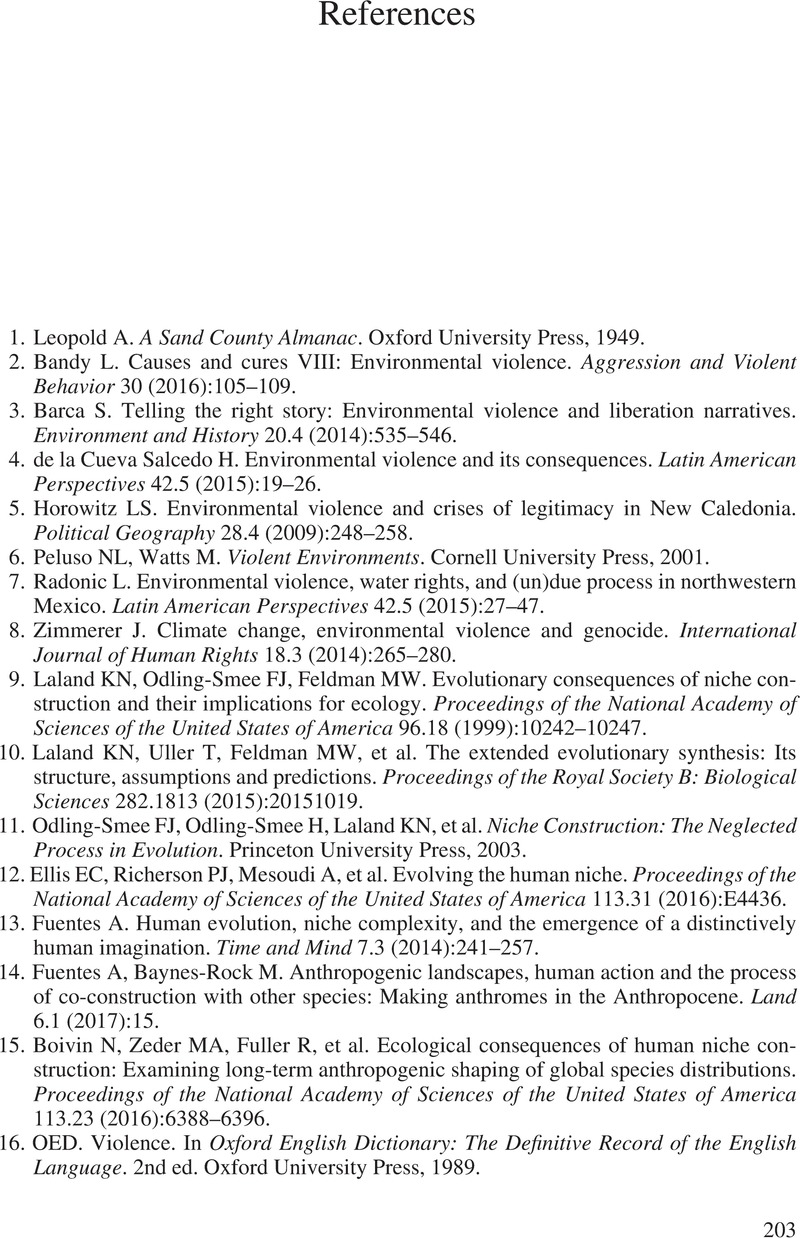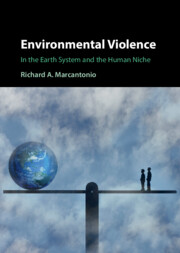Book contents
- Environmental Violence
- Environmental Violence
- Copyright page
- Contents
- Preface
- Acknowledgments
- 1 Approaching Environmental Violence
- 2 Environmental Violence Defined
- 3 Environmental Violence across the Earth System and the Human Niche
- 4 The Flow of Environmental Violence on the Pampana River, Sierra Leone
- 5 Paradise in Peril: Environmental Violence in Everyday Island Life
- 6 Reflections, Findings, and Future Applications of the Environmental Violence Framework
- 7 Ethics, Policy, and Trajectories for Environmental Violence
- Notes
- References
- Index
- References
References
Published online by Cambridge University Press: 14 July 2022
- Environmental Violence
- Environmental Violence
- Copyright page
- Contents
- Preface
- Acknowledgments
- 1 Approaching Environmental Violence
- 2 Environmental Violence Defined
- 3 Environmental Violence across the Earth System and the Human Niche
- 4 The Flow of Environmental Violence on the Pampana River, Sierra Leone
- 5 Paradise in Peril: Environmental Violence in Everyday Island Life
- 6 Reflections, Findings, and Future Applications of the Environmental Violence Framework
- 7 Ethics, Policy, and Trajectories for Environmental Violence
- Notes
- References
- Index
- References
Summary

- Type
- Chapter
- Information
- Environmental ViolenceIn the Earth System and the Human Niche, pp. 203 - 246Publisher: Cambridge University PressPrint publication year: 2022

